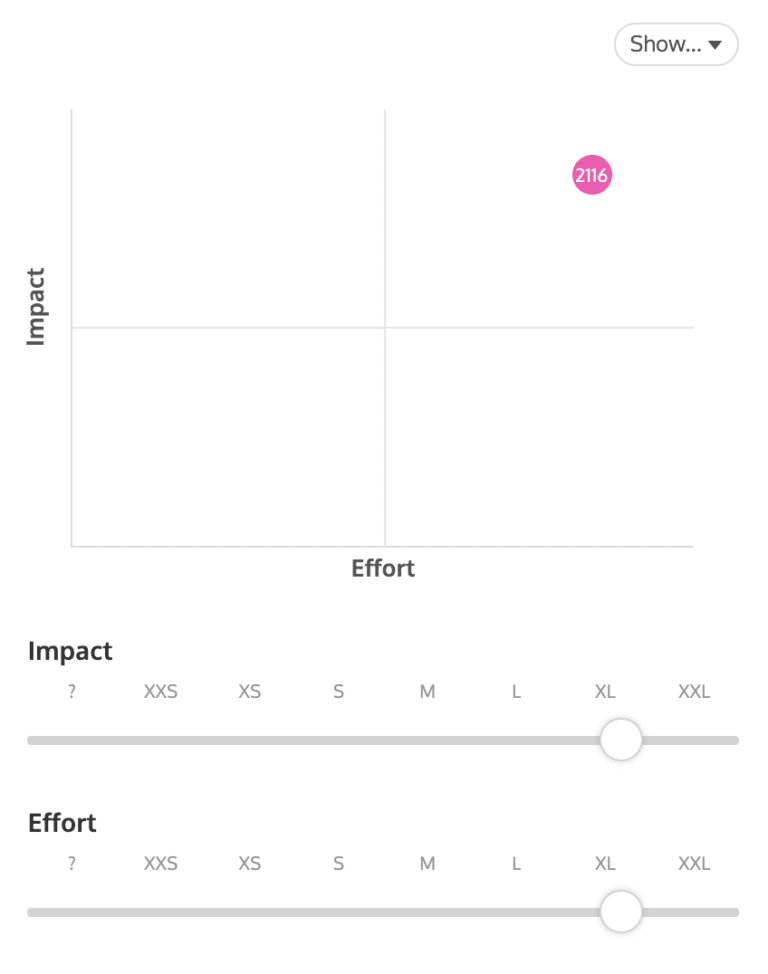Making Data-Informed (Not Data-Driven) Decisions
Making data-informed decisions is the right way to go. This is different to data-driven decisions, which can easily lead you down a rabbit hole. There is context which sits outside data that needs to be considered, which is why data alone cannot help you make the call on what to build next. The best decisions are made when product managers use insights from other sources, as well as data.
Understanding problems
Before you begin prioritizing features, it’s important to take a step back and first understand the problems you’re trying to solve. Initiatives and ideas must be clear so your teams understand what the problem is before spending time on understanding what the solution (or feature) should look like.
You don’t want to make the mistake of jumping in and coming up with solutions. You’ll lose your way and become blindsided by what you’re supposed to be building in the first place.
Consider your vision and objectives
Consider how customer problems fit within your existing set of objectives. Your team should have two to three aligned objectives at any given time. Don’t start building new features that fall outside of these objectives or you will lose focus. You’ll just end up getting distracted by the next shiny thing instead of the next helpful thing.

Customer feedback
Understanding customer insights is one of the most important aspects of product management. Without customer feedback, we wouldn’t know which problems to solve next and how to solve them. After all, we’re not building just for ourselves, but for others.
Quantitative feedback is a good place to start. It will help you understand where some main trends are starting to grow. That being said, just because you have a lot of people requesting something, doesn’t mean you should build it. If that feature doesn’t fit within your existing vision or objectives, it might not be the right time.
It’s also important to consider different ways of solving a problem. Qualitative feedback allows you to look through everything your customers are saying so you can understand what the problem is. Remember, you shouldn’t just be building what people are asking for. This in turn is one of the key differences between being “data-driven” and “data-informed.” Inform yourself by looking at the data and understand that perhaps there’s a better way to handle a problem.
Impact and effort
Another aspect to consider is the impact and effort involved to bring an idea to life.
Once you have been through the discovery process, gathered feedback, decided which ideas fit within your objectives, it’s time to decide how the work will be tackled. This again is a data-informed decision, not a data-driven one. You will need to look at the available resource in your team as to whether or not you’re able to push forward a high-effort idea.

Following your instincts
It is ok for you to follow your instincts, provided you know your product and your customers, and are still using data to inform your decisions.
Being data-informed
When prioritizing new features or looking for new things to build, there are aspects to consider outside what metrics and data tell you. Even if you have all the information at your hands, your idea may not be great from the start. But why? Well, that’s the golden question to ask. Gather more feedback, understand what your customers are still struggling with, and learn from the process.
Why not sign up for a ProdPad demo? Our team of product experts will be able to answer all your questions around making effective, data-informed decision making.
Sign up to our monthly newsletter, The Outcome.
You’ll get all our exclusive tips, tricks and handy resources sent straight to your inbox.